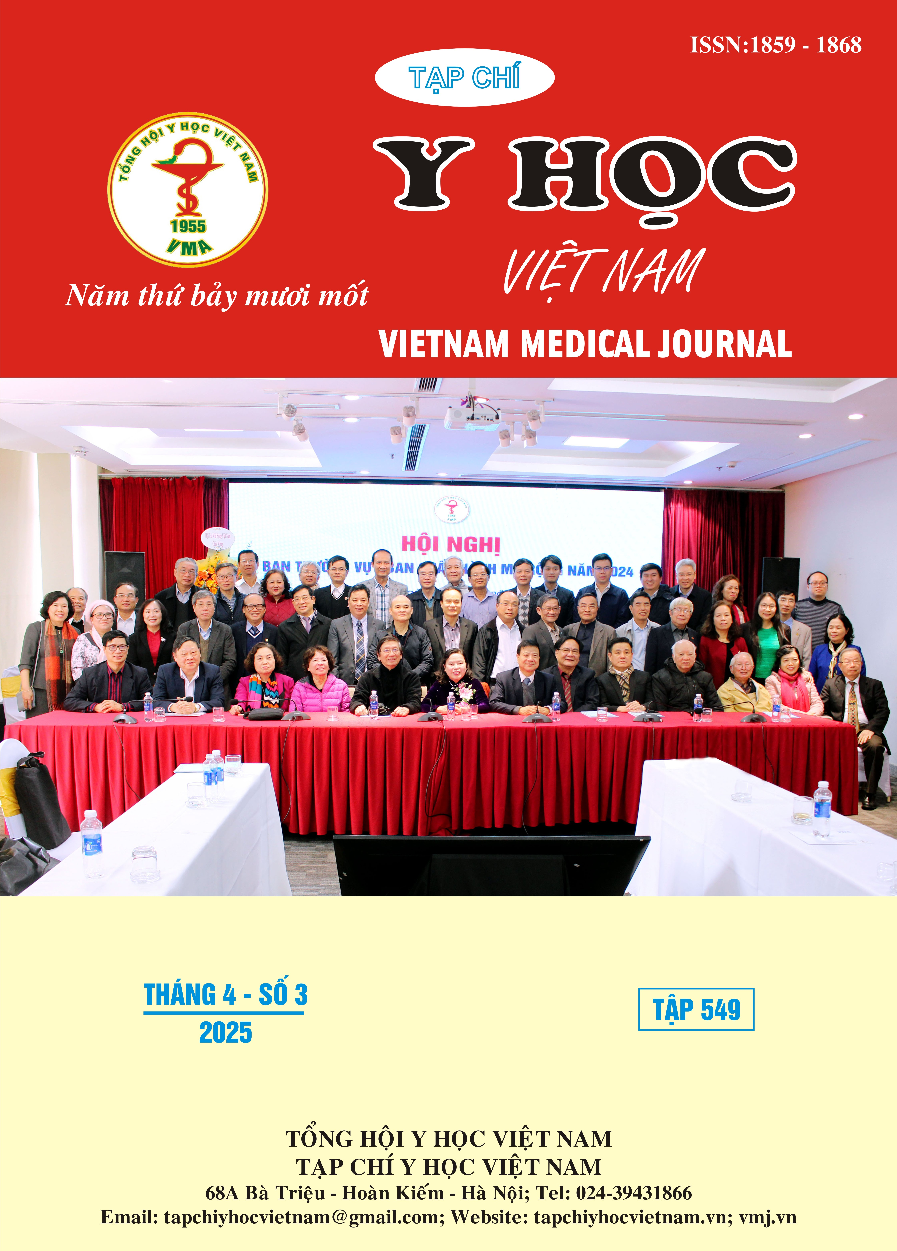EVALUATION OF THE RESULTS OF LAPAROSCOPIC HELLER MYOTOMY AND DOR FUNDOPLICATION FOR ACHALASIA AT NGHE AN GENERAL FRIENDSHIP HOSPITAL
Main Article Content
Abstract
Objective: To evaluate the results of laparoscopic Heller myotomy and Dor fundoplication for achalasia at Nghe An General Friendship Hospital. Subjects and Methods: A prospective descriptive study was conducted on 39 patients diagnosed with esophageal achalasia who underwent laparoscopic Heller myotomy and Dor fundoplication from September 2020 to September 2024. Results: The mean age was 49.03 ± 16.66 years, 69.2% were male. The mean BMI was 19.29 ± 2.61 kg/m², and 84.6% of patients were classified as ASA I. The average total length of the myotomy was 8.22 ± 0.45cm. Intraoperative complications occurred in 4 patients (10.3%), with esophageal mucosal perforation in 2 patients (5.1%). No cases required conversion to open surgery, and there were no postoperative complications. The average blood loss was 7.18 ± 2.99 ml. The mean surgical time was 118.21 ± 23.21 minutes. Postoperatively, mild pain was reported by 94.9% of patients, with an average duration of analgesic use of 1.54 ± 0.43 days. The average time to first flatus was 24.59 ± 6.74 hours, the average time to resume oral feeding was 2.69 ± 0.8 days, and the average length of hospital stay was 6.26 ± 1.23 days. Conclusion: Laparoscopic surgery for Achalasia using the Heller myotomy plus fundoplication is a safe and effective method, with a low complication rate and a short recovery time post-surgery.
Article Details
Keywords
Achalasia, esophageal motility disorders, laparoscopic Heller myotomy, Dor fundoplication
References
2. G. Zaninotto et al., “The 2018 ISDE achalasia guidelines,” Dis. Esophagus, vol. 31, no. 9, Art. no. 9, Sep. 2018, doi: 10.1093/dote/doy071.
3. H.-K. Jung et al., “2019 Seoul Consensus on Esophageal Achalasia Guidelines,” J. Neurogastroenterol. Motil., vol. 26, no. 2, pp. 180–203, Apr. 2020, doi: 10.5056/jnm20014.
4. Bùi Duy Dũng và cộng sự. “Đặc điểm lâm sàng, cận lâm sàng của bệnh nhân co thắt tâm vị tại Bệnh viện Bạch Mai và Bệnh viện Trung ương Quân đội 108,” J. 108 - Clin. Med. Phamarcy, Apr. 2022, doi: 10.52389/ydls.v17i2.1144.
5. Đỗ Trường Sơn và Phạm Đức Huấn, “Phẫu thuật nội soi điều trị bệnh co thắt tâm vị: Kinh nghiệm qua 10 năm theo dõi tại Khoa phẫu thuật tiêu hoá Bệnh viện Việt Đức,” Tạp Chí Học Lâm Sàng, vol. 33, pp. 68–72, 2016.
6. S. L. Siow et al., “Laparoscopic Heller myotomy and anterior Dor fundoplication for achalasia cardia in Malaysia: Clinical outcomes and satisfaction from four tertiary centers,” Asian J. Surg., vol. 44, no. 1, pp. 158–163, Jan. 2021, doi: 10.1016/j.asjsur.2020.04.007.
7. Wang Q., Liu L., Dong L., Shen Z., Zhou D., and Hu C., “Laparoscopic Heller-Dor operation for patients with achalasia,” Chin. Med. J. (Engl.), vol. 119, no. 6, p. 443, Mar. 2006.
8. S. Rosemurgy, C. A. Morton, M. Rosas, M. Albrink, and S. B. Ross, “A single institution’s experience with more than 500 laparoscopic Heller myotomies for achalasia,” J. Am. Coll. Surg., vol. 210, no. 5, Art. no. 5, May 2010, doi: 10.1016/j.jamcollsurg.2010.01.035.


